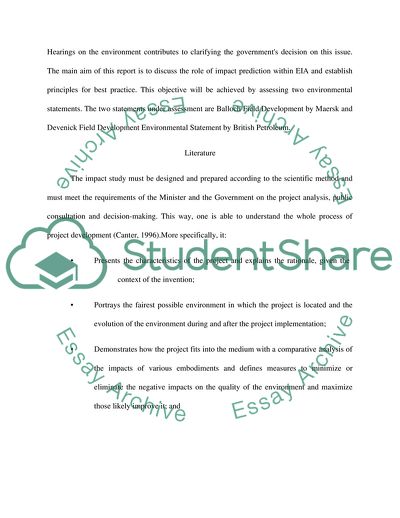Cite this document
(Consider the role of impact prediction within EIA and establish Essay, n.d.)
Consider the role of impact prediction within EIA and establish Essay. Retrieved from https://studentshare.org/environmental-studies/1788842-consider-the-role-of-impact-prediction-within-eia-and-establish-principles-for-best-practice-from-a-review-of-at-least-two-environmental-statements-ess-assess-the-extent-to-which-best-practice-is-being-achieved
Consider the role of impact prediction within EIA and establish Essay. Retrieved from https://studentshare.org/environmental-studies/1788842-consider-the-role-of-impact-prediction-within-eia-and-establish-principles-for-best-practice-from-a-review-of-at-least-two-environmental-statements-ess-assess-the-extent-to-which-best-practice-is-being-achieved
(Consider the Role of Impact Prediction Within EIA and Establish Essay)
Consider the Role of Impact Prediction Within EIA and Establish Essay. https://studentshare.org/environmental-studies/1788842-consider-the-role-of-impact-prediction-within-eia-and-establish-principles-for-best-practice-from-a-review-of-at-least-two-environmental-statements-ess-assess-the-extent-to-which-best-practice-is-being-achieved.
Consider the Role of Impact Prediction Within EIA and Establish Essay. https://studentshare.org/environmental-studies/1788842-consider-the-role-of-impact-prediction-within-eia-and-establish-principles-for-best-practice-from-a-review-of-at-least-two-environmental-statements-ess-assess-the-extent-to-which-best-practice-is-being-achieved.
“Consider the Role of Impact Prediction Within EIA and Establish Essay”. https://studentshare.org/environmental-studies/1788842-consider-the-role-of-impact-prediction-within-eia-and-establish-principles-for-best-practice-from-a-review-of-at-least-two-environmental-statements-ess-assess-the-extent-to-which-best-practice-is-being-achieved.


